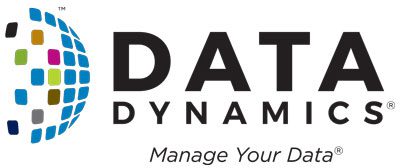Cloud computing has opened up a world of possibilities, and hybrid cloud stands out as an attractive choice for many industries. But what about manufacturing? Can switching to the hybrid cloud provide them with the tools they need to become more successful? In this article, we’ll explore how hybrid cloud can help make their operations more agile, resilient and flexible in meeting their key business goals. So let’s take a look!
Hybrid Cloud: What is it?
A hybrid cloud is a combination of on-premises, private cloud, and public cloud services with orchestration and automation, combining the speed and agility of public cloud services with the security and control of private cloud services.
Manufacturers can benefit from hybrid clouds because they can remain resilient against disruptions, respond quickly to market changes, and scale up or down as needed. In addition, hybrid cloud can help manufacturers reduce IT costs by using the most cost-effective mix of on-premises, private cloud, and public cloud services.
Advantages of Utilizing Hybrid Cloud in the Manufacturing Industry
Industrial companies are already deploying hybrid clouds to improve their operations. It is a mix of on-premises private clouds and public clouds, with each playing a different role within the larger system.
A hybrid cloud setup enables companies to leverage the public cloud for non-critical applications or data while reserving the private cloud for handling more sensitive information. By doing so, businesses can benefit from the flexibility and scalability of the public cloud while maintaining control over their vital data and processes.
Hybrid cloud in manufacturing offers four primary benefits: faster cycle times, enhanced visibility, reduced costs, and better management of plant applications.
1. Improved visibility and faster cycle time:
For a typical analytics project in a plant, data scientists spend three weeks doing initial analysis, then three months collecting data, analyzing it, and provisioning servers. The huge amount of data may not be analyzed by machine learning and artificial intelligence running in isolation. In addition to increasing visibility, data scientists can access data on-demand and work on value-added analysis and modeling.
In order to achieve faster cycle times, we must use AI and machine learning services provided by the public cloud and address security risks across locations, data latency, operational visibility, compliance, and regulations.
2. Improved plant management and cost reduction:
In an audit of where data is generated, stored, and used, frequent data movement is evident. This movement is wasteful and expensive. Currently, many plants aggregate data before storing it to reduce costs and network congestion. Through better IoT integration and data placement, projects can be completed faster, costs are reduced, and access times to hot data are significantly reduced.
3. Security and Compliance:
Hybrid clouds provide greater security and compliance than either on-premises or public clouds alone. Companies can benefit from the scalability and agility of the cloud while maintaining tight control over their most sensitive data by maintaining critical data and processes on-premises while using the public cloud for less sensitive information.
Three Transformative Effects of Hybrid Cloud
One thing that has remained constant in today’s ever-changing business landscape is the need for resiliency, agility, and flexibility. Increasing complexity and globalization of the manufacturing industry have only increased these needs. These three things can be achieved through the hybrid cloud.
In addition to avoiding single points of failure, businesses can gain greater control over their data and applications by utilizing on-premises and off-premises resources. Here’s how:
Resilience: By distributing workloads across multiple public and private clouds, hybrid cloud can provide organizations with resiliency. A cloud-based solution allows organizations to move workloads in the event of a disruption or outage, minimizing downtime and ensuring business continuity. Organizations can also improve their disaster recovery capabilities and reduce the risk of data loss by leveraging multiple clouds.
Agility: Organizations can quickly provision and scale resources up or down in hybrid clouds, providing agility. By leveraging public cloud resources for bursty and unpredictable workloads, organizations can keep sensitive data and critical applications on-premises while leveraging public cloud resources for bursty or unpredictable workloads. As a result, organizations can quickly respond to changing customer needs and business requirements without compromising security or compliance.
Flexibility: In hybrid cloud, organizations can choose from a variety of cloud models to meet their specific requirements, providing flexibility. They can choose the right cloud for the right workload, whether it’s a public cloud for web applications or a private cloud for sensitive data. As a result, organizations can optimize their IT infrastructure in terms of cost, performance, security, and compliance.
Case Studies of Successful Hybrid Cloud Implementations
The first case study comes from General Electric (GE), one of the largest manufacturers in the world. Hybrid cloud was early adopted by GE and has since been used successfully. In 2013, GE launched Predix, a platform-as-a-service offering to enable industrial developers to build, deploy, and manage applications on its global data center network. GE could quickly develop and deploy new applications and services with Predix.
Another leading manufacturer, Mercedes-Benz, is the subject of the second case study. For its Manufacturing Execution System (MES), Mercedes-Benz uses Amazon Web Services (AWS). MES is a critical tool used to manage production data and workflows. By running MES on AWS, Mercedes-Benz has been able to reduce costs and improve performance.
The third instance is that of John Deere. One of the world’s largest agricultural equipment manufacturers, John Deere, uses Azure DevOps Services to manage its software development lifecycle. Using Azure DevOps, John Deere can manage and scale its development efforts in the cloud, while also taking advantage of advanced analytics and artificial intelligence.
In conclusion, adoption of hybrid cloud solutions in manufacturing operations provides a wealth of benefits. It ensures flexibility, resilience and agility while optimizing related processes and abiding by relevant industry regulations. This allows businesses to both maximize upscaling possibilities and keep costs down, whilst having access to the latest technology. In this way, manufacturers can guarantee successful operations even within highly dynamic markets.
Microsoft Azure: A hyper scaler that operates in parallel worlds – both private and public cloud
Microsoft’s hybrid initiative, Azure Stack, is an addition to Azure that aims to bring the flexibility and rapid innovation of cloud computing to on-premises settings. The fundamental idea behind the Azure Stack is to allow businesses to store sensitive data and information in their data centers while still having access to Azure’s public cloud. It is a hybrid platform that offers single sign-on (SSO) in both public and private clouds, a selection of vendors, services, administration tools, and SLA management tools, as well as orchestration of both Azure’s public cloud and Azure Stack’s on-premises deployments. As Microsoft releases new capabilities for developing technologies, it can also adapt and support them, and it can be adaptable and agile to enable that adaptability.
Take a free ride to Microsoft Azure with Data Dynamics
Enterprises are concerned about migration complexities when moving enterprise data to the cloud. Without adequate planning, migrating data, code, applications, and workloads can result in higher costs and take a lot of time. Therefore, before beginning your relocation adventure, it is essential to evaluate every part of it.
According to Gartner, the hidden cost associated with cloud migration are as follows:
- The wrong team
- The wrong emphasis
- Rushed application assessments
- Poor landing zone design
- Dependency bottlenecks
It seems overwhelming, right?
How about a data migration partner who can eliminate all these challenges and help you migrate to Azure at zero cost!
Introducing the Azure File Migration Program – a collaboration between Microsoft and Data Dynamics that helps customers move their data into the Azure cloud at ZERO license cost! Through this program, Microsoft and Data Dynamics aim to help organizations address some of their most critical challenges in the cloud migration lifecycle, such as cost, speed, talent, and risk. Click here to know more.
Benefits:
- Intelligent data management across on-premise, azure, and hybrid cloud
- Structuring unstructured data across heterogeneous & Microsoft data sources with classification tagging for ownership, access, metadata, and content
- Intelligent data placement closest to applications meeting data governance and compliance requirements
- Automated data migrations to Azure files, Azure NetApp files & Azure Blob
- Automated access control and file security management
- 3X faster migrations, 10X more productivity, 60% reduced TCO, and FREE migrations
- In-year ROI on software investment and data growth in Azure applies to their Microsoft Azure Commit to Consume (MACC)
- High-touch customer engagement model with training and 24/7 support.
To discover more about Data Dynamics, click here or contact us at solutions@datdyn.com or call us at (713)-491-4298 or +44-(20)-45520800.






